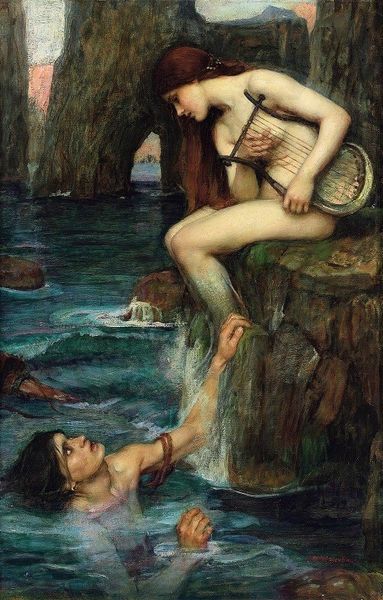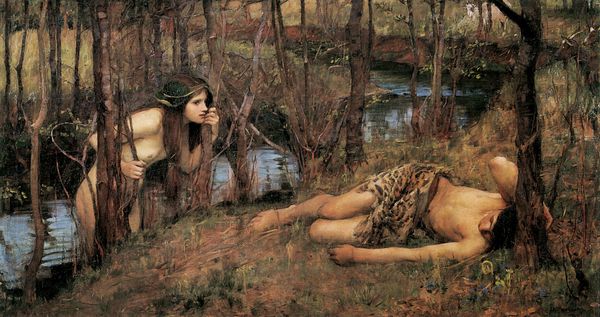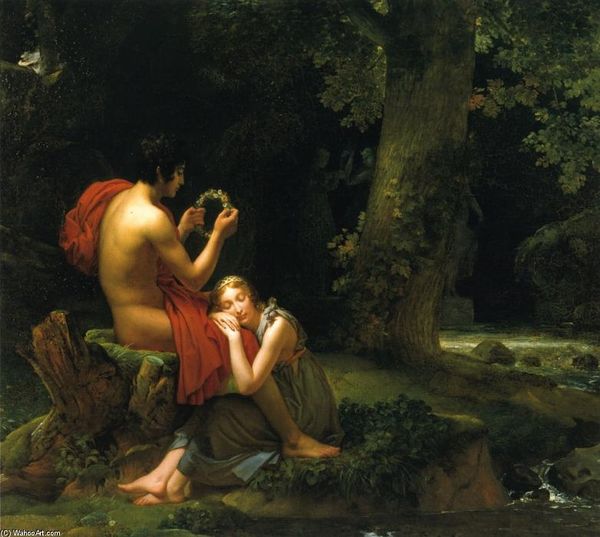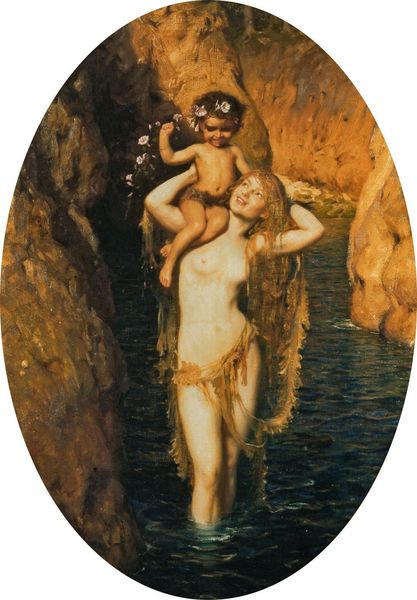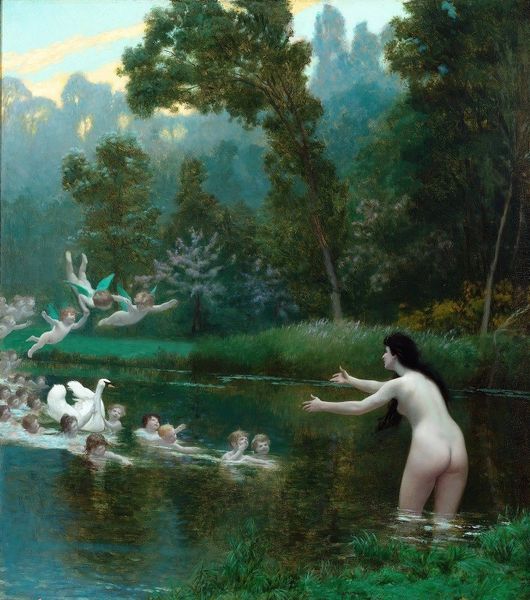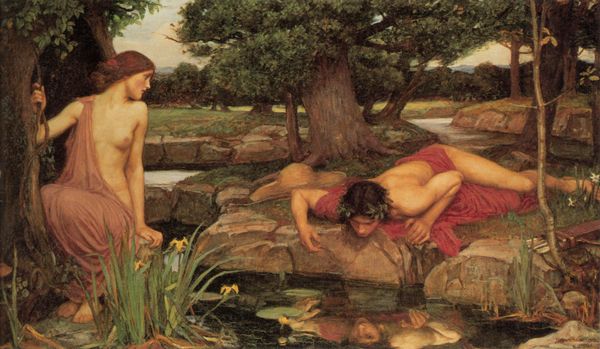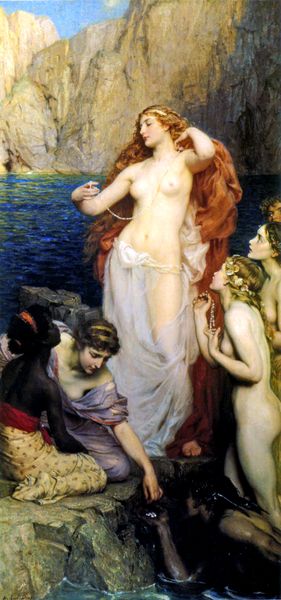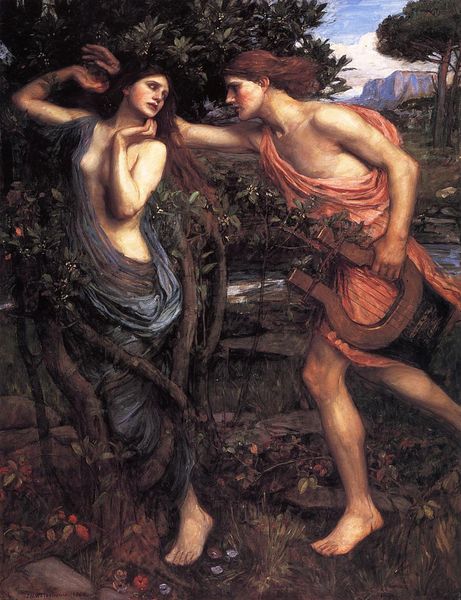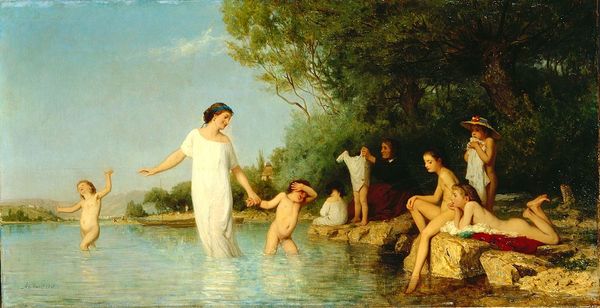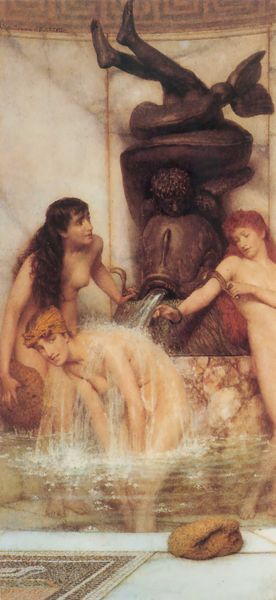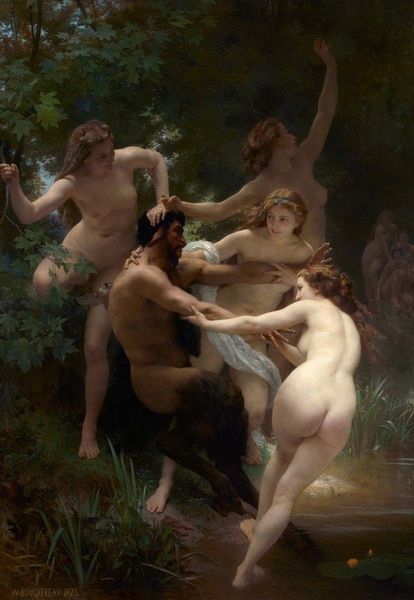
Dimensions: 91 x 152 cm
Copyright: Public domain
Editor: Here we have Waterhouse's *Hylas and the Nymphs* from 1896, created with oil paint. There's such a contrast between the dark, almost muddy water and the luminous skin of the nymphs. What is your read of this piece? Curator: Look closely at how Waterhouse used the oil paint. The layers and blending…almost a mass-production-like assembly line for idealised feminine beauty. How does this manufactured image reflect the socio-economic climate of the late 19th century? Think of Victorian England's industrial boom and its impact on art's role. Editor: That’s a compelling point. I was so focused on the mythological narrative that I didn't connect it to Victorian society's manufacturing processes. So, you are suggesting that Waterhouse is mirroring industrial techniques within his painting practice? Curator: Exactly. The Pre-Raphaelites, to which Waterhouse belonged, were obsessed with detail and, essentially, hyper-realism. How might we relate that focus on detail to contemporary manufacturing? The painstaking process mimics the efficiency and detail sought after in industrialized England. Notice how Hylas is essentially being 'processed' by the nymphs – pulled into their world, made to conform to their ideal. He is another product. Editor: It's almost as if the nymphs are a type of consumer product, manufactured by male artists. Curator: Precisely! The male gaze solidifies the image of the desirable but dangerous woman as commodity and it renders female bodies tools used for pleasure and a way to advance the plot in many histories, dramas and poems. Consider the role of consumerism within the picture itself and then try to think about what that may have been meant to mean in late Victorian England. Editor: That definitely offers a darker reading of the painting than I initially considered! Thanks for sharing that, it's been really helpful to think about the social and material processes reflected in the artwork itself. Curator: Indeed. Looking at art this way can reveal surprising truths about our relationship with materiality, both then and now.
Comments
No comments
Be the first to comment and join the conversation on the ultimate creative platform.
